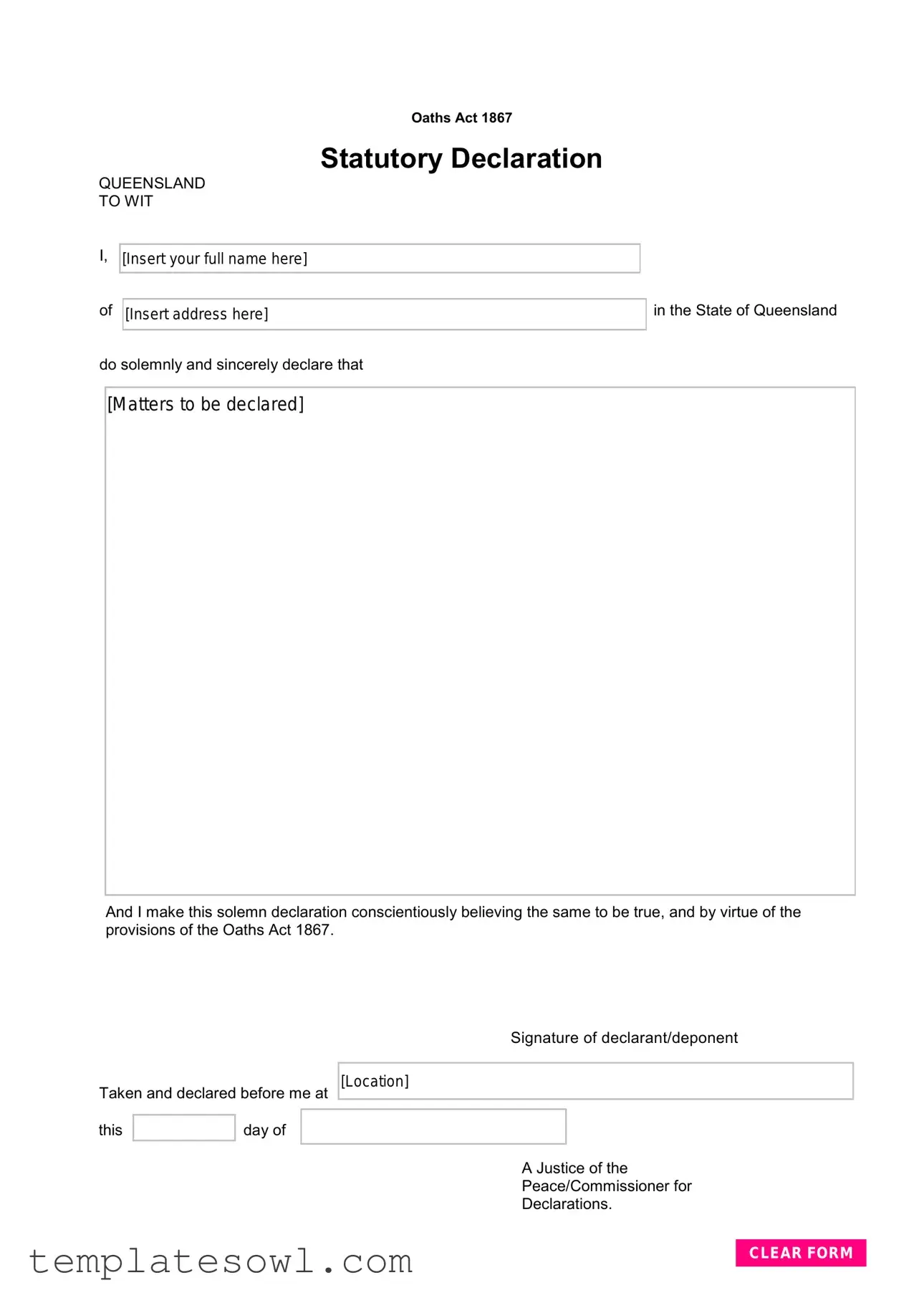What is a Statutory Declaration in Queensland?
A Statutory Declaration in Queensland is a legal document that allows an individual to declare certain facts as true. It is executed under the Oaths Act 1867 and is often used to affirm information for various legal, administrative, or contractual purposes. The declaration must be made sincerely and in confidence, ensuring that the information provided is accurate.
Who can witness a Statutory Declaration?
In Queensland, a Statutory Declaration must be witnessed by an authorized person. This includes a Justice of the Peace, Commissioner for Declarations, lawyer, police officer, or other individuals specified under the relevant legislation. It's essential to ensure that the witness is eligible to validate the declaration to avoid complications.
What information do I need to include in the Stat Dec Qld form?
The Stat Dec Qld form requires specific details such as your full name and address. Additionally, you need to declare the matters that you wish to affirm as true in the space provided within the form. Clarity and conciseness in your declarations are crucial for the document's effectiveness.
Is there a fee to have a Statutory Declaration witnessed?
Fees for witnessing a Statutory Declaration may vary based on the witness's profession. For example, services rendered by legal practitioners or private notaries might incur charges, while Justices of the Peace typically provide this service for free. It is advisable to confirm any potential fees in advance.
Can I make changes to the Stat Dec Qld form after it has been signed?
Once a Statutory Declaration has been signed and witnessed, it is considered a legal document. It is not permissible to alter or amend the content of the form after it has been completed. If changes are necessary, a new Statutory Declaration should be drafted and signed.
Where can I obtain a Statutory Declaration form?
A Statutory Declaration form can be obtained from various sources, including government websites or legal service offices. Many community centers and justice offices also provide printable versions. Ensure you are using the most current official form to meet legal requirements.
How long is a Statutory Declaration valid for in Queensland?
The validity of a Statutory Declaration in Queensland is not explicitly defined by law, but it is generally viewed as valid as long as the information remains true and relevant. However, certain institutions or agencies may specify required time frames, so it is advisable to check with them regarding their specific policies.
What should I do if I provide false information in my Statutory Declaration?
Providing false information in a Statutory Declaration can lead to severe legal consequences, including penalties or criminal charges. If you realize that you have made an error or provided false information, consult with a legal professional immediately for guidance on how to rectify the situation.

